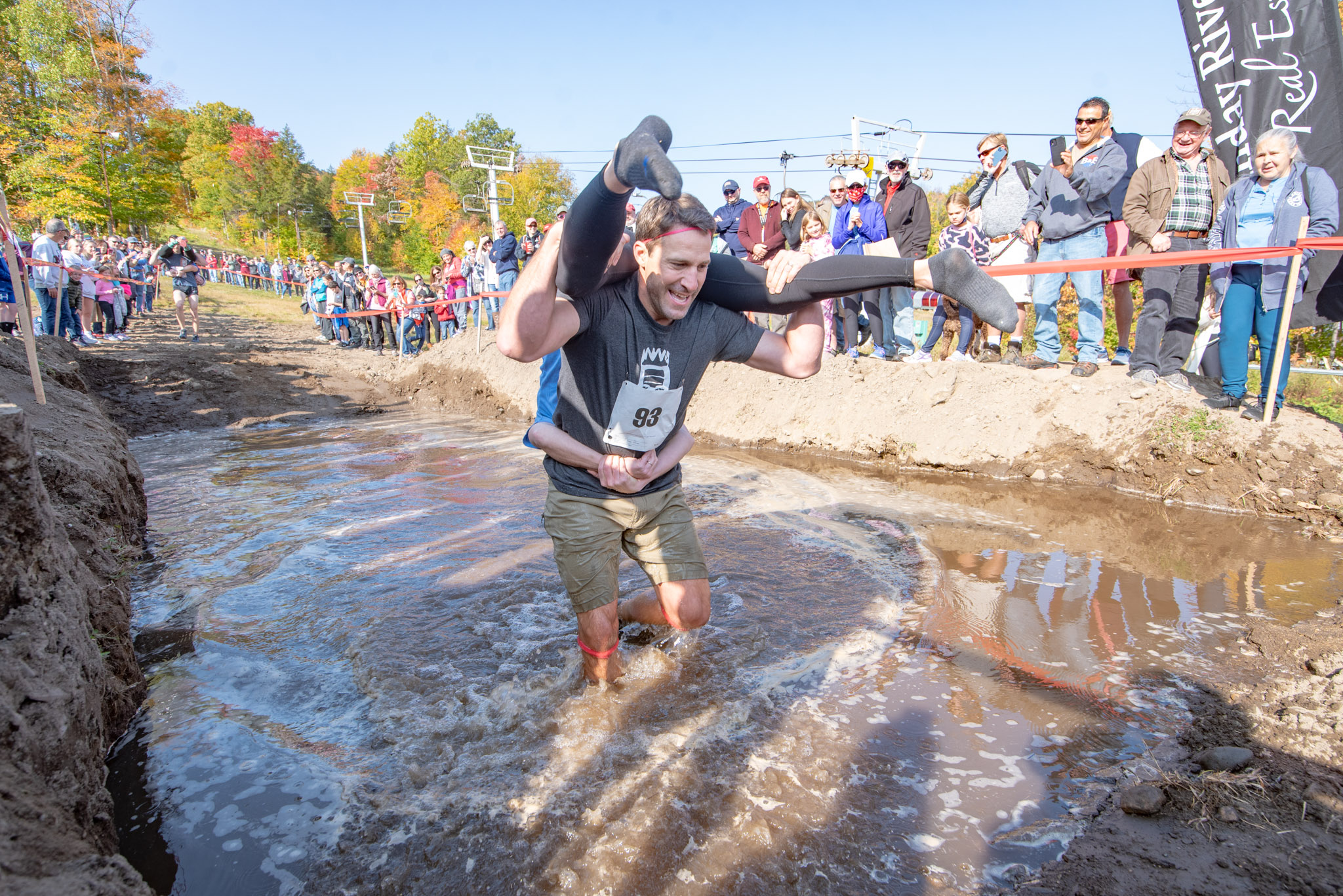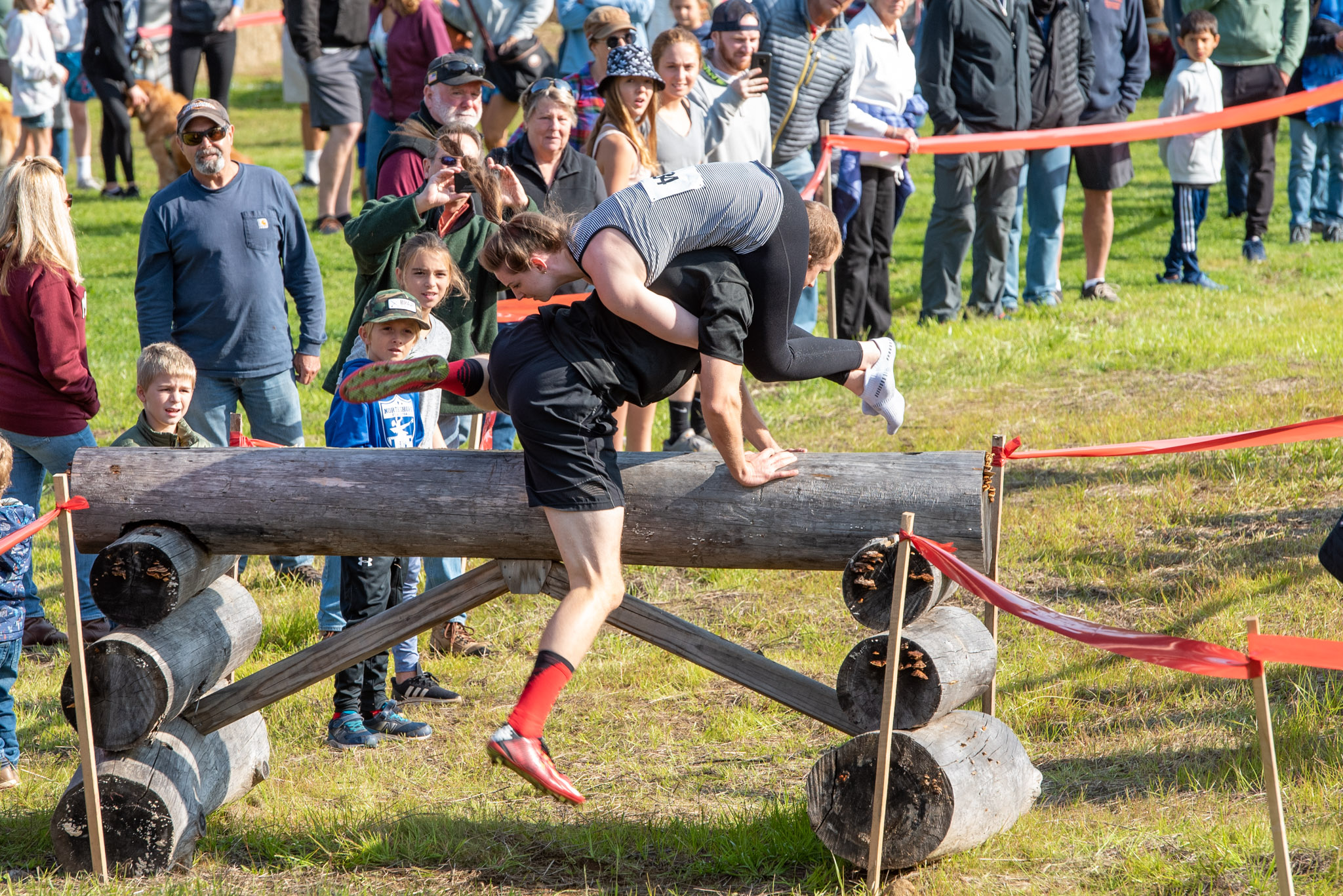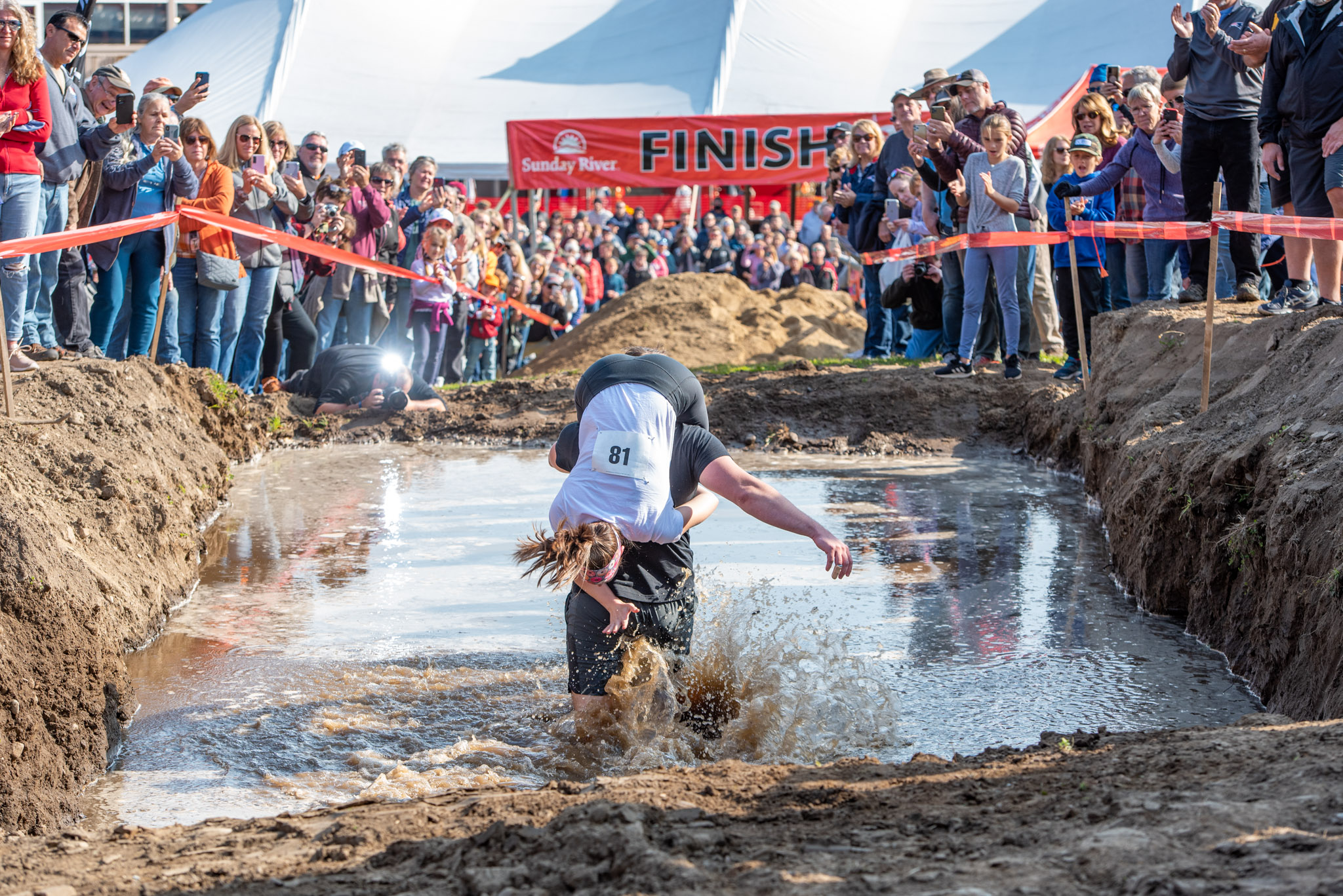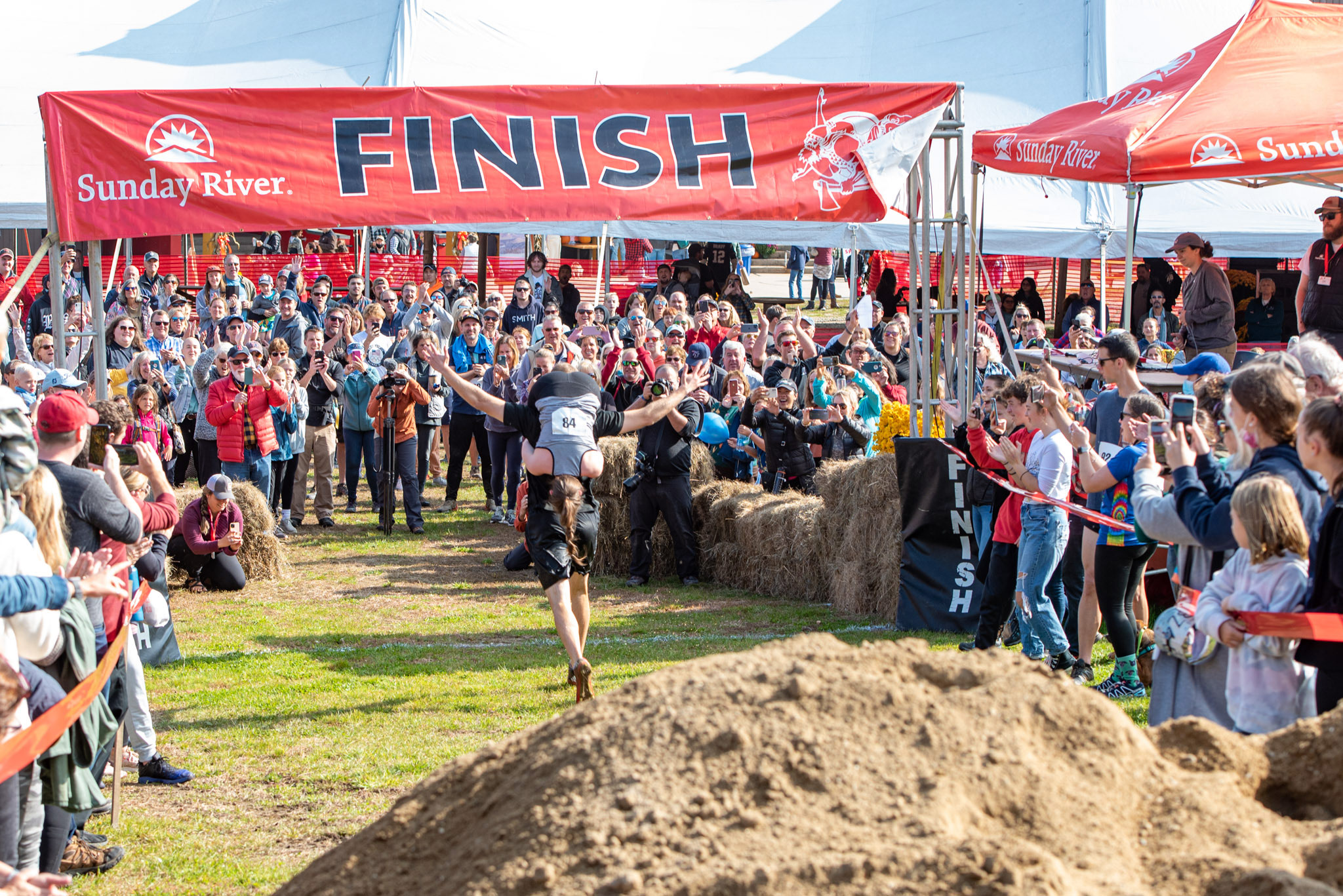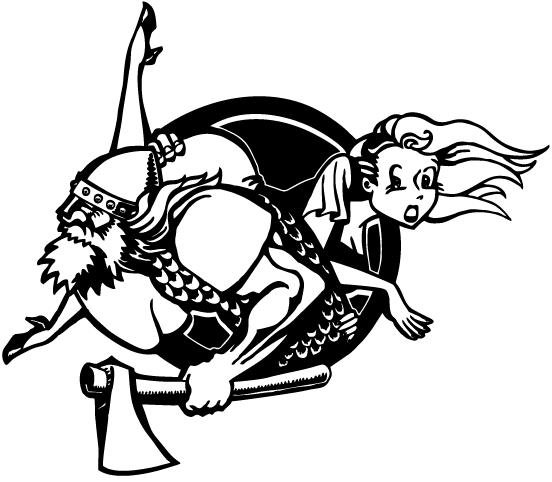History
Wife Carrying originated in Finland, and its history is based
around the 19th century legend of Herkko Rosvo-Ronkainen, or
“Ronkainen the Robber.” There are three stories as to how the
sport was created. First, Ronkainen and his thieves were accused
of stealing food and women from villages in the area he lived
in; then carried these women on their backs as they ran away.
Second, it has been said the men would go to villages near their
own to steal other men's wives, and then have the woman become
their own wife. Third is the story that Ronkainen trained his
thieves by carrying big, heavy sacks on their backs, which could
have eventually evolved to a sport.
The first modern day wife carrying event was held in Finland in
1992 and foreign contestants were admitted in 1995. This event
is now held annually in Sonkajärvi, Finland as the World
Championship. A North American Championship was started in 1999.
Contacts & Event Sanctioning
Sunday River Resort owns the North American Wife Carrying
Championship and serves as the sanctioning body for the sport in
the U.S. and Canada. To sanction a wife carrying event in the
U.S. or Canada and pre-qualify winners for the North American
Championship contact the
Sunday River Events team.
For media inquiries regarding the North American Championship
including photos and video of past events, and press access for
future events contact
the Communications team
at Sunday River.

